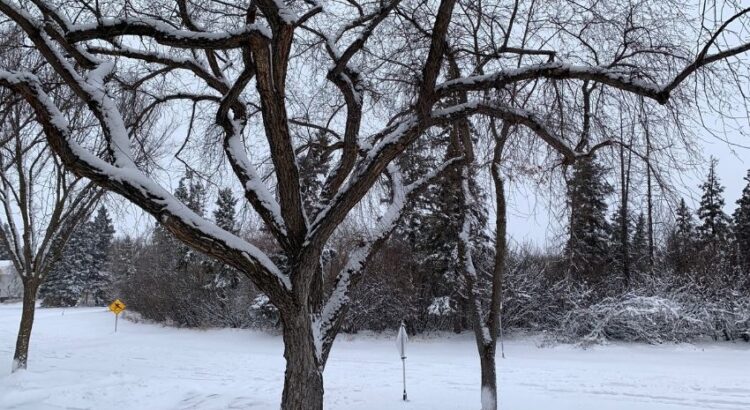Winter can be a challenging season for trees, as freezing temperatures, heavy snow, and icy winds place significant stress on their health and structure. Proper preparation ensures that your trees not only survive the season but thrive once spring arrives. Enlisting the expertise of professional arborists can make all the difference. Below, we outline detailed steps to prepare your trees for winter with the help of seasoned professionals.
Assessing Tree Health
The first step in winter preparation is a comprehensive health assessment of your trees. Professionals can identify potential vulnerabilities that might worsen during the colder months.
- Checking for Diseases and Pests: Arborists carefully inspect the trees for signs of fungal infections, decay, or pest infestations. Addressing these issues promptly prevents further damage during winter, as dormant pests and hidden infections can resurface in spring.
- Examining Structural Integrity: Professionals assess the branches and trunk for cracks, weak joints, or deadwood. These areas are particularly susceptible to breakage under the weight of snow and ice.
An expert evaluation ensures a proactive approach to safeguarding your trees against the season’s challenges.
Pruning and Deadwood Removal
Pruning is essential for maintaining tree health and preventing winter damage. Professionals perform this task with precision and an understanding of species-specific requirements.
- Eliminating Dead or Weak Branches: Deadwood or fragile branches can easily snap under the weight of snow, posing risks to property and people. Professionals remove these hazards to enhance safety.
- Shaping the Tree for Balance: Arborists prune strategically to maintain the tree’s structural balance, ensuring it can withstand winter storms. Overgrown or uneven branches are trimmed to distribute weight evenly.
Proper pruning not only protects your trees but also enhances their aesthetics and health long-term.
Mulching for Insulation
Mulching around the base of your trees is a crucial step in winter preparation. Professionals ensure the process is done correctly to provide maximum benefits.
- Applying an Appropriate Layer: A layer of organic mulch, such as wood chips or bark, is spread around the tree’s base. This acts as insulation, helping to regulate soil temperature and retain moisture during freezing conditions.
- Avoiding Mulch Piling: Professionals ensure the mulch is not piled against the trunk, which can lead to rot or attract pests. Instead, they create a protective, even ring around the tree.
Mulching protects the roots and ensures the tree remains hydrated throughout winter’s harsh conditions.
Protecting Against Harsh Elements
Winter conditions can cause physical damage to tree bark and branches. Arborists offer protective solutions tailored to each tree’s needs.
- Installing Tree Wraps: Thin-barked trees, such as young maples or fruit trees, are prone to cracking from temperature fluctuations. Professionals apply protective wraps to shield the trunk from sunscald and frost cracks.
- Cabling and Bracing: For trees with weak branches or split trunks, arborists may use cabling or bracing systems to provide additional support during winter storms.
These protective measures ensure your trees withstand the season’s extremes without suffering structural damage.
Fertilizing to Strengthen Roots
Proper nourishment before winter fortifies trees, helping them endure the dormant season with resilience. Professionals use fertilizers to enrich the soil with essential nutrients.
- Choosing the Right Fertilizer: Arborists select slow-release fertilizers that promote root growth and replenish nutrient levels depleted during the growing season.
- Timing the Application: The application is done in late fall, just before the ground freezes, to ensure the nutrients are absorbed effectively.
This step supports root development and prepares trees for a robust return in spring.
Managing Snow and Ice Load
Heavy snow and ice accumulation can cause significant stress to branches and trunks. Professionals provide strategies to mitigate these risks.
- Removing Snow Safely: Arborists gently remove excess snow from branches to prevent breakage. They use specialized tools and techniques to avoid causing damage during the process.
- Applying Anti-Desiccants: For evergreen trees, professionals may apply anti-desiccant sprays to minimize water loss through needles during winter, reducing the risk of winter burn.
Proactive management of snow and ice ensures your trees remain intact and healthy throughout the season.
Consulting Experts for Tree-Specific Needs
Every tree species has unique requirements, particularly when preparing for winter. Consulting with arborists ensures tailored care.
- Custom Plans for Tree Species: Professionals create customized plans based on the specific needs of your trees, taking into account their age, health, and local climate conditions.
- Preventative Pest Control: Dormant season pest control treatments can be applied to protect your trees from insects that may overwinter and emerge in spring.
Expert guidance guarantees that your trees receive the specialized attention they deserve.
Long-Term Benefits of Professional Assistance
Working with arborists to prepare your trees for winter offers lasting advantages beyond the season.
- Enhanced Tree Lifespan: Proper care and preventative measures improve the overall health and longevity of your trees.
- Increased Property Value: Healthy, well-maintained trees enhance the aesthetic and financial value of your property.
With professional help, your trees can thrive through winter’s challenges and flourish beautifully in the coming seasons.
Preparing your trees for winter is an investment in their health and your landscape’s future. Through expert care, you can ensure they remain strong, resilient, and a source of beauty year-round.





